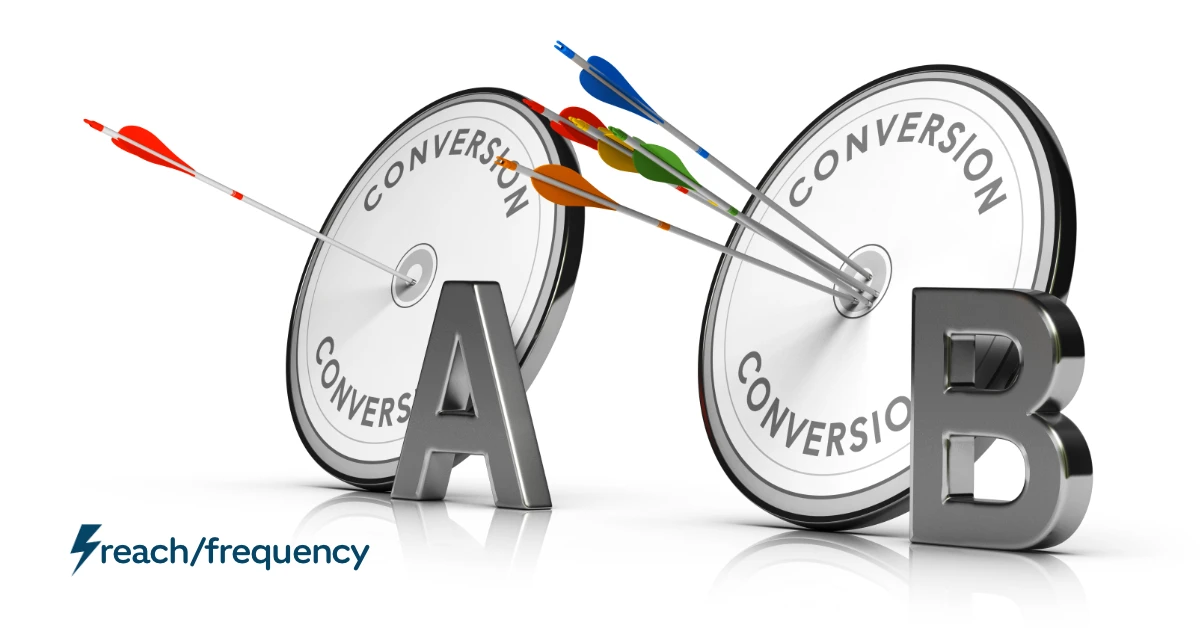A/B testing, also known as split testing, is a crucial strategy in web development and digital marketing that compares two versions of a webpage to determine which performs better. It’s a method that goes beyond just optimizing campaigns; it’s about enhancing the overall user experience and content on your site. This approach can reveal valuable insights into user preferences and behavior, guiding you to make data-driven decisions that boost engagement and conversion rates.

The Essentials of A/B Testing
At its core, A/B testing involves presenting two variants of a web page (A and B) to different segments of visitors at the same time. The goal is to see which version leads to more conversions, engagement, or any other metric that defines success for your site. This process is foundational in understanding the power of A/B testing in refining your website’s design, content, and user pathways.
- What to Test: From headlines and CTAs to images and page layouts, the aspects you can test are virtually limitless.
- Setting Goals: Define what success looks like for each test, whether it’s increased time on page, higher click-through rates, or more sign-ups.
Real-World Applications of A/B Testing
I want to share an example from a website I manage. Tasked with creating a new section for a novel medical service, I encountered a unique challenge: the service catered to both men and women in distinct ways. Therefore, the section needed to attract and engage both genders, encouraging them to explore further.
I opted to directly address these diverse audiences from the start. I crafted a landing page that clearly directed women and men down separate paths, based on the assumption that each group would engage more with content specifically tailored to them.
To ensure I was developing the most effective pages, I initiated A/B testing with an alternative approach. The second page began with a general overview of the service, highlighting its benefits before delving into gender-specific details towards the end.
Once the tests were up and running, I sat back awaiting my validation from Google. However, the results took me by surprise. Users visiting the second page engaged more deeply, spending more time on the site and exploring additional pages compared to those who landed on the first version. It turned out that a broader interest in the service’s technology captivated users more than the targeted information did. This revelation allowed me to learn from my errors and create the most successful page possible.
Enhancing User Experience Through Split Testing
A/B testing is a potent tool for enhancing the user experience. By systematically testing different aspects of your website, you can uncover what truly resonates with your audience. This not only improves user satisfaction but also directly impacts your site’s performance in terms of engagement and conversions.
- Optimize Navigation: Test different navigation structures to find the most intuitive user journey.
- Personalize Content: Tailor content to meet the needs of different user segments based on testing results.
Leveraging Split Testing for Content Optimization
Content is king in digital marketing, and A/B testing is the queen that ensures it reigns supreme. By applying split testing to your content strategy, you can discover which headlines, formats, and types of content capture your audience’s attention and drives action.
- Test Headlines: Determine which headlines lead to higher open rates and engagement.
- Video vs. Text: Find out whether your audience prefers video content over text-based information.

Broadening Horizons with A/B Testing
A/B testing isn’t just for website content; it’s a versatile tool that can optimize nearly every aspect of digital marketing. From email campaigns to social media efforts, understanding the preferences of your audience can significantly impact your strategy’s effectiveness.
Optimizing Email Campaigns
- Subject Lines: Test different subject lines to see which ones yield a higher open rate. A compelling subject line can make the difference between an opened email and one that’s overlooked.
- Call to Action (CTA): Varying your email’s CTA can reveal preferences that lead to higher click-through rates. Sometimes, the difference between “Learn More” and “Get Started” can be significant.
Enhancing Social Media Performance
- Post Timing: Discover the best times to post by testing different schedules. The optimal time can vary significantly across different platforms and target audiences.
- Content Formats: Experiment with various content types, like images, videos, and text posts, to see which ones engage your audience the most. Engagement metrics like likes, shares, and comments can guide your content strategy.
Beyond Digital Content
A/B testing extends to product offerings, pricing strategies, and more, providing insights that can drive decision-making across all areas of a business. By embracing the power of A/B testing in these broader areas, companies can finely tune their approaches to meet the nuanced needs of their markets.
FAQs
A/B testing and split testing refer to the same process of comparing two versions of a webpage to determine which performs better.
An A/B test should run until it reaches statistical significance, typically a few weeks, depending on your website’s traffic and the variation in conversion rates.
Properly conducted A/B testing won’t harm your SEO. Ensure you’re following best practices, such as not cloaking or creating duplicate content.
Use A/B testing when you want to make data-driven decisions about your website’s design, content, and user experience strategies.

